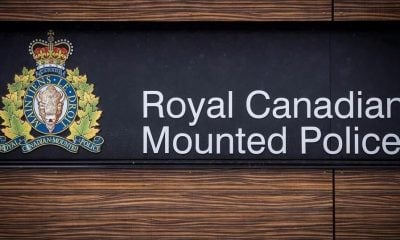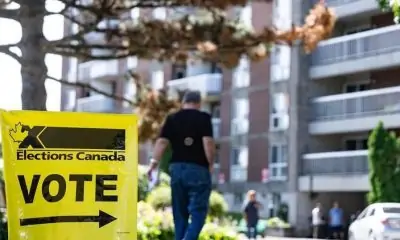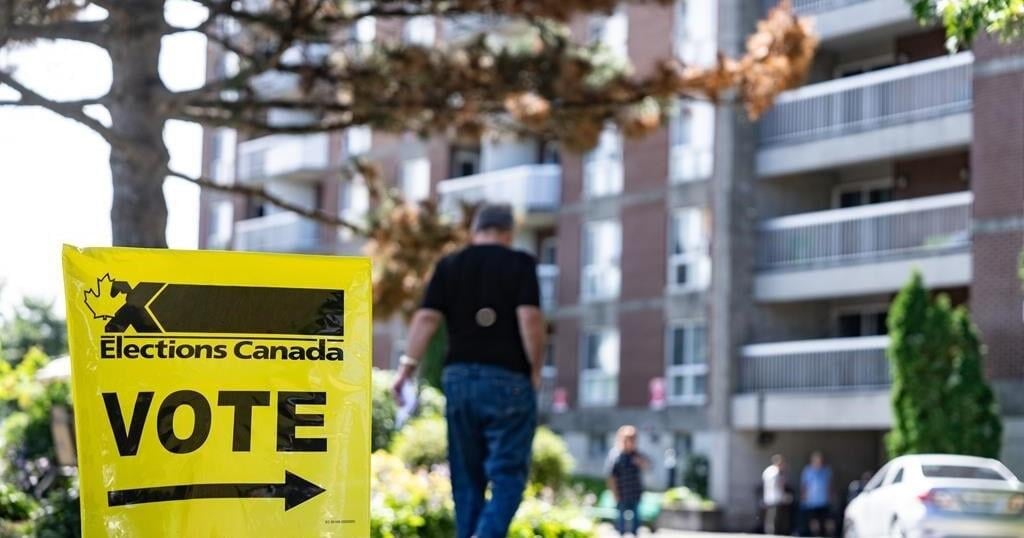Introduction
Hydrogen holds significant promise as an alternative low-carbon
energy source in a range of applications and sectors. Hydrogen is
light, versatile, storable, transportable, and energy dense. At BLG
we advise on the applications of hydrogen in high value sectors
such as transportation, energy and utilities, technology,
agribusiness and infrastructure. We also recognize that the
hydrogen economy will develop uniquely in each industry sector and
geographic region, with available feedstocks, energy inputs,
existing infrastructure and geology influencing each industry and
regional approach.
Blue hydrogen – hydrogen produced from natural gas,
coupled with a carbon capture and storage (CCS) system – has
an advantage in Western Canada, which boasts abundant natural gas
reserves, close and symbiotic industry clusters, existing pipeline
infrastructure, and ideal sequestration geology. Provinces such as
Alberta also have favourable legislative regimes, sophisticated
regulators, and experienced and innovative industry participants to
support the emerging hydrogen economy. With government support,
there will be extensive opportunities for new investment in
hydrogen midstream infrastructure as the blue hydrogen economy
emerges in Western Canada.
What you need to know:
- Western Canada’s regional
advantages favour blue hydrogen production - Alberta has the natural geology,
transferable experience and legislative framework to support CCS
for blue hydrogen - Existing hydrogen production and
transportation infrastructure in Western Canada, along with
blending opportunities, establishes a foundation for further
dedicated hydrogen development, but government support and
political will remain crucial.
Regional advantages
The federal government1 and several provincial
governments2 have recently released hydrogen strategies
analyzing the advantages and opportunities of transitioning toward
a less carbon-intensive economy using hydrogen (see
BLG’s comments in our Hydrogen series).
Each Canadian region is likely to develop a distinct approach
based on its available feedstocks (natural gas, electricity and
water), energy inputs (natural gas, coal, nuclear or hydro-based
electricity), existing infrastructure (pipelines, electric
transmission) and geology. As the Federal Hydrogen Strategy
recognized, “provincial regulations and policies, resource
availability, geography and climate, infrastructure, and technology
maturity will shape the timing and scale for hydrogen deployment
across Canada.”3
Western blue
In Western Canada, the natural advantage favours blue
hydrogen.
While hydrogen can be produced from a variety of
feedstocks,4 currently the primary source of global
hydrogen production is from natural gas, accounting for
approximately 75 per cent of the annual global dedicated hydrogen
production of approximately 70 millions tonnes
(Mt).5
Canada ranks in the top 10 of global hydrogen producers and
produces about 3 Mt of hydrogen annually (about 8,200 tonnes of
hydrogen per day 6), mainly for industrial
use7 – constituting approximately four per cent of
the global total. Most hydrogen is currently produced in Western
Canada (76 per cent).
Industrial hydrogen is mainly produced from Steam Methane
Reforming, where methane from natural gas is heated with steam and
a catalyst to produce a mixture of carbon monoxide and
hydrogen8.
Steam Methane Reforming is the most cost-efficient means of
producing hydrogen.9 It does, however, generate carbon
emissions. To assist in achieving Canada’s commitments to
reduce green house gas (GHG) emissions by 30 per cent below 2005
levels by 2030,10 and the federal government’s
target to achieve net zero emissions by 2050, Steam Methane
Reforming production must be coupled with a CCS system. It is
estimated that life-cycle emissions from hydrogen produced from
natural gas with 90 per cent+ CCS ranges from 2 to 3 CO2e/kg
Hydrogen,11 compared to approximately 9 to 10.7 CO2e/kg
Hydrogen without CCS12.
CCS
a) Natural advantages
Having recognized the necessity of a CCS scheme to support blue
hydrogen production, the location, feasibility and costs of carbon
storage must be considered. Depleted oil and gas reservoirs and
saline formations comprised of porous reservoir rocks saturated
with brackish water or brine can be used for CO2
storage.13 The geology of the Western Canadian
Sedimentary Basin is the ideal location for this, and the
geological characteristics of most depleted oil and gas reservoirs
are well known and documented.
It has been estimated that for blue hydrogen to be the energy
carrier for 27 per cent of Canada’s primary energy demand in
2050, the CCS requirement would be approximately 203 Mt C02 per
year14 (although it is recognized that this is a
theoretical upper bound since such hydrogen production would
consume the equivalent of 72 per cent of Canada’s current
natural gas production). While there are a number of variables
involved, it has been estimated that the practical CO2 storage
potential in all discovered oil and gas reservoirs in Western
Canada ranges from 5 to 10 Gt CO2.,15 and theoretically
as much as 4,000 Gt CO2 in deep saline formations,16
suggesting that the Western Canadian carbon storage capacity is
more than sufficient to accommodate this theoretical upper bound of
blue hydrogen production.
The challenge, however, will be to identify technically suitable
and sufficiently depleted candidate reservoirs so that C02 storage
can be staged with efficient oil and gas reservoir management and
exploitation,17 in locations that are proximate to
hydrogen production sites, and that are not adversely competing or
overlapping with other storage schemes. The candidate sites must
also be “economically viable, technically feasible, safe,
environmentally and socially sustainable and acceptable to the
community.18” This C02 storage potential is the
primary natural advantage for the production of blue hydrogen in
Western Canada.19
b) Related experience
The development of the blue hydrogen economy in Western Canada
will also be facilitated by its experience in similar projects.
Many of the lessons and experiences from existing enhanced oil and
gas recovery schemes and acid gas projects, and comparable
operations such as natural gas storage, confirm that C02 can be
safely injected and stored at appropriate locations. In addition,
technology already used in the oil and gas industry in Western
Canada (such as well drilling technology, liquid waste injection
technology, computer simulation of storage reservoir dynamics and
monitoring methods) can be adapted for long term CCS
programmes.20
In Alberta, the Shell-operated Quest CCS facility has
successfully demonstrated the capture and storage of 5 Mt of C02
over the past five years,21 and the Alberta Carbon Trunk
Line, with the capacity to transport 14.6 Mt per year, is
demonstrating the successful transportation of captured C02 over a
240-kilometre pipeline. In Saskatchewan, the Weyburn and Midale C02
enhanced oil recovery projects, and the Aquistore transportation
and storage projects provide opportunities to test, monitor and
improve CCS schemes.
c) Existing legislative and regulatory regime
Alberta has already articulated a CCS legislative and regulatory
framework which governs pore ownership, injection and long term
stewardship, in addition to establishing detailed regulations for
well construction, operation and abandonment for injection wells
that will be applicable to C02 sequestration operations. This
framework further supports and de-risks the development of the blue
hydrogen economy.
According to the Mines and Minerals Act, 22
(the MMA) the pore space below the surface of all land in Alberta,
other than land owned by the federal Crown, has been declared to be
the property of the Crown in right of Alberta,23 and the
rights for use of the pore space are administered by Alberta
Energy.
Indeed, the Carbon Sequestration Tenure Regulation24
(the CS Tenure Regulation), specifically contemplates a storage
domain for C02 sequestration consisting of pore space contained in,
occupied by, or formerly occupied by, minerals or water within an
underground formation deeper than 1,000 metres below the surface of
the land (at which depth, depending on temperature, the C02 will be
in a dense fluid state).
The CS Tenure Regulation contemplates the grant of evaluation
permits to allow a person to test deep subsurface reservoirs and
evaluate the geological or geophysical properties to determine its
suitability for sequestration of captured C02. The MMA also
contemplates the Minister entering into ‘carbon sequestration
leases,’ granting a person the right to inject captured C02
into a subsurface reservoir for sequestration.25 The
carbon sequestration lease may grant the right to drill wells,
conduct evaluation and testing, and inject captured C02 into the
deep subsurface reservoirs for a 15-year term which term may be
renewed, subject to appropriate monitoring, measurement and
verification plans and closure plans.
Perhaps the most notable aspect of the MMA for the economic
prospects of blue hydrogen in Alberta, however, is section 121,
which provides that the Crown will assume long-term liability for
projects involving the sequestration of captured C02, once
abandonment obligations have been satisfied and a closure
certificate has been granted. The effect is that the Crown becomes
the owner of the injected C02, assumes the obligations as
owner/licensee of the wells and facilities,26 as the
“person responsible” for the injected C0227,
as the operator of the lands28 and as the user of the
surface rights, and also releases the lessee from obligations to
indemnify the Crown in relation to the use or drilling of the
injection well29.
The Crown also indemnifies the lessee from damages in a tort
action brought by a third party if attributable to the lessee’s
exercise of rights under an agreement in relation to the injection
of captured C0230. The MMA also establishes a
post-closure Stewardship Fund, into which CCS operators must pay
fees in accordance with the regulations,31 which can be
used for monitoring the injected C02, fulfilling any liability
obligations assumed by the Crown and paying for suspension,
abandonment and reclamation or remediation costs for orphan
facilities. These regulatory and statutory assurances should
improve the long term risk mitigation and storage costs associated
with CCS, thus facilitating blue hydrogen production.
Hydrogen pipelines
Addressing the CCS problem is only one part of supporting the
blue hydrogen economy. The next challenge is providing for the
transportation, compression or liquefaction, storage and
distribution infrastructure for the produced hydrogen. Gaseous
hydrogen is commonly delivered in compressed tube trailers or
cryogenic liquid tankers by truck, rail or barge. However,
transportation by dedicated hydrogen pipelines offers a low cost,
safe option for delivering large volumes of
hydrogen.32
There are a number of technical challenges involved in large
volume hydrogen transportation by pipeline, including the potential
for hydrogen to embrittle the steel and welds in transmission
pipelines,33 aggravating leak and permeation issues, and
the need to improve reliable hydrogen compression to accomplish the
necessary compression ratio.34 These can be addressed by
regulation or by tariff.
There are also economic, regulatory and scale issues. Dedicated
hydrogen pipelines require significant capital investments,
supported by long-term user contracts, and a supportive regulatory
environment, to ensure responsible linear project development and
to promote safe construction, operation and abandonment. It may
also be necessary for public investment into the early stages of
greenfield pipeline construction or brownfield pipeline conversion
projects to ensure the development of a backbone hydrogen
transportation system which provides sufficient scale to be
economically viable and which is openly accessible.
Hydrogen can also be transported in existing natural gas
pipelines by blending it with the natural gas (between 5 and 20 per
cent hydrogen by volume35). This can provide a lower
carbon gas product to consumers, or, in conjunction with downstream
separation and purification technologies, a means of delivering
pure hydrogen to market. Pilot blending projects are ongoing in
B.C., Alberta36 and Ontario. However, because of the
limits on blending and the continuing need for natural gas
pipelines, it is expected that a combination of blending and
dedicated hydrogen pipelines will be required to support the
development of the full Western Canadian hydrogen economy.
Takeaways
There is considerable excitement about the role of hydrogen in
reducing energy carbon intensity. Each region in Canada may develop
its own strategy based on its natural advantages.
In Western Canada, the production of blue hydrogen is supported
by an advantageous CCS environment, including the natural
geological potential of depleted oil and gas reservoirs and saline
formations, transferable technology and experience, and a well
articulated legislative and regulatory framework. Existing
pipelines which transport C02, hydrogen and blended hydrogen will
further support a blue hydrogen economy, although additional public
support may be required to ensure sufficient scale.
Footnotes
1 “Hydrogen Strategy for Canada: Seizing the
Opportunities for Hydrogen”, Dec. 16, 2020, (the Federal Hydrogen Strategy).
2 British Columbia ; Alberta; Ontario and Ontario Low-Carbon.
3 Federal Hydrogen Strategy page 74.
4 Including water, electricity, fossil fuels, and
biomass.
5 IEA “the Future of Hydrogen: Seizing
today’s opportunities, June 2019” (the IEA
Report).
6 Layzell DB; Young C; Lof J; Leary J; Sit, S. 2020.
Towards Net-Zero Energy Systems in Canada: a Key role for Hydrogen.
Transition Accelerator Reports: Vol. 2, Issue
3 (the Transition Accelerator Report).
7 Such as fuel refining and nitrogen fertilizer
production.
8 It is also possible to produce hydrogen using auto
thermal reforming (ATR), which combines SMR with partial oxidation
in a single reactor, coupled with CCS to produce blue
hydrogen.
9 While there is much interest in “green”
hydrogen, which produces hydrogen using renewable energy to
electrolyse water, green energy does not have the production
capacity or cost advantages of blue hydrogen in the near term. For
example, the Transition Accelerator Report estimates that blue
hydrogen can be produced for approximately $1.52/kg to $3.32/kg
compared to approximately $2.24/kg to $5.36/kg for green hydrogen.
Thus, blue hydrogen will retain an advantage until the scale and
costs of green hydrogen permit it to take on a larger role. (See
Transition Accelerator Report, page 44).
10 Canada committed to reducing GHG emissions by 30 per
cent below 2005 levels by 2030 as part of the Paris Agreement with
a 2030 target of 511 Mt.
11 See Transition Accelerator Report, page 9.
12 See Transition Accelerator Report, page
31.
13 Intergovernmental Panel on Climate Change, 2005: IPCC
Special Report on Carbon Dioxide Capture and Storage. Prepared by
Working Group III of the Intergovernmental Panel on Climate Change
[Metz, B., O. Davidson, H. C. de Coninck, M. Loos, and L. A. Meyer
(eds.)]. Cambridge University Press, Cambridge, United Kingdom and
New York, NY, USA, 442 pp (the IPCC Report) – Chapter 5
“Underground geological storage”.
14 Transition Accelerator Report, page 10.
15 IPCC Report Chapter 5 “Underground geological
storage” page 222.
16 IPCC Report Chapter 5 “Underground geological
storage” page 223.
17 IPCC Report Chapter 5 “Underground geological
storage” page 221. “There is uncertainty about when oil
and gas fields will be depleted and become available for C02
storage. The depletion of oil and gas fields is most affected by
economic rather than technical considerations, particularly oil and
gas prices.” Note also that s.39(1.1) of the Oil and Gas
Conservation Act RSA 200, c.O-6 provides that the Regulator
shall not grant a C02 disposal scheme approval unless it is
satisfied that the injection of the captured C02 will not interfere
with (a) the recovery or conservation of oil or gas, or (b) an
existing use of the underground formation for the storage of oil or
gas.
18 IPCC Report Chapter 5 “Underground geological
storage”.
19 The Federal Hydrogen Strategy notes that “The
production of hydrogen from natural gas via steam methane forming
with CCUS will be constrained by the availability and accessibility
of carbon storage geology. Alberta, BC and Saskatchewan have both
large natural gas reserves and CO2 storage potential making them
favourable for this production pathway.” P. 25.
20 IPCC Report p. 197
21 Quest CCS facility captures and stores five
million tonnes.
22 RSA 2000, c M-17.
23 Section 15.1(1) of the Mines and Minerals Act
RSA 2000, c M-17 declares that: (1) “no grant from the Crown
of any land, … or mines or minerals in any land in Alberta, has
operated or will operate as a conveyance of the title to the pore
space contained in, occupied by or formerly occupied by minerals or
water below the surface of that land; (2) “the pore space
below the surface of all land in Alberta is vested in and …
remains the property of the Crown in right of Alberta,”
whether or not the MMA or an agreement issued under the MMA grants
rights in respect of a subsurface reservoir (for example, storage
rights) or minerals occupying a subsurface reservoir (for example,
mineral rights), whether or not “minerals or water is
produced, recovered or extracted from a subsurface reservoir”;
and (3) Crown title to pore space “is deemed to be an
exception contained in the original grant from the Crown for the
purposes of section 61(1) of the Land Titles
Act.
24 Alta Reg 68/2011.
25 S. 116 MMA.
26 Under the Oil and Gas Conservation Act. RSA
2000, c O-6.
27 Under the Environmental Protection and Enhancement
Act RSA 2000, c E-12.
28 Under the Environmental Protection and Enhancement
Act (ibid).
29 Section 56(2)(a) of the MMA.
30 Section 121(2).
31 Section 122 of the MMA.
32 The Air Products 50 kilometre hydrogen pipeline from
its 150 mmcf/d hydrogen facility in the Industrial Heartland of
Alberta is an example.
33 “Blending Hydrogen into Natural Gas Pipeline
Networks: a Review of Key Issues.” M.w. Melaina; O. Antionia;
and M. Penev. National Renewable Energy Laboratory, March 2013.
Page viii.
34 U.S. Department of Energy’s Office of Energy
Efficiency and Renewable Energy
35 It is noted that the maximum hydrogen blend varies
widely depending on industrial facilities, end user appliances,
pipeline types and ages, and natural gas composition and is subject
to numerous safety and material integrity issues.
36 See for example the Atco Gas and Pipelines Fort
Saskatchewan hydrogen blending project.
Originally Published by Borden Ladner, January 2021
The content of this article is intended to provide a general
guide to the subject matter. Specialist advice should be sought
about your specific circumstances.

































